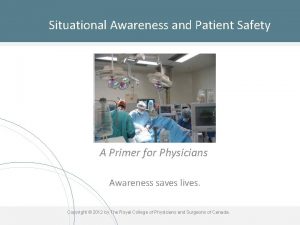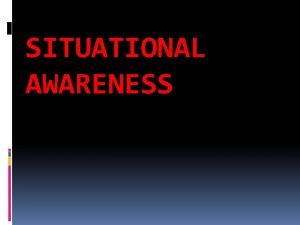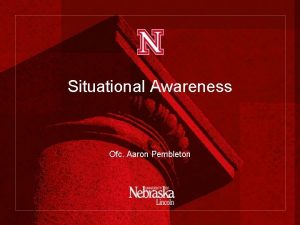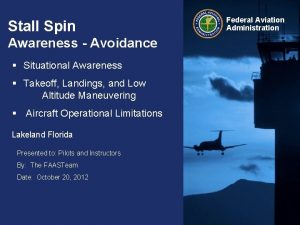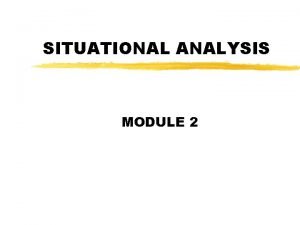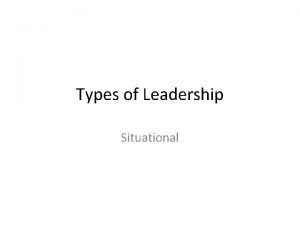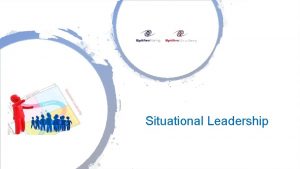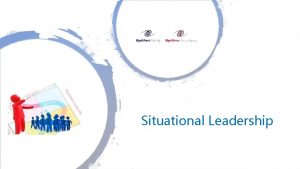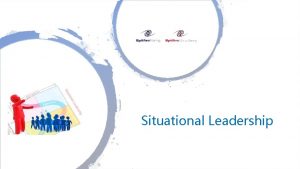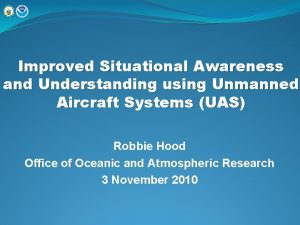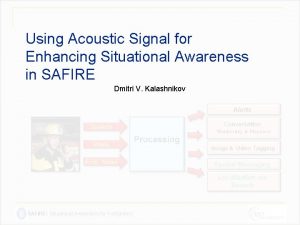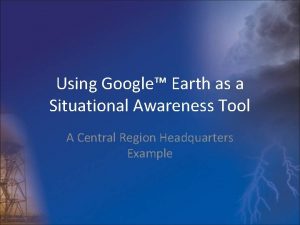Using Resources for PrePlanning and Situational Awareness How





























- Slides: 29

Using Resources for Pre-Planning and Situational Awareness How Wake County, NC has Implemented these valuable tool.

The Familiar and the Expected « Hurricanes – Hugo, Fran, Floyd, Isabel, Frances & Ivan « Winter Storms « Tornadoes « Floods « Hazardous Material Spills « Forest Fires « Landfill Fires « Transportation Accidents « Water System Failures « Missing Persons

On December 3 1984, large amounts of water entered a tank at the Union Carbide factory in Bhopal, India. That water reacted with the 42 tons of methyl isocyanate inside, raising temperature and pressure so high that it began venting massive amounts of gas made up of methyl isocyanate, phosgene, hydrogen cyanide and more. The poisonous cloud swept through neighborhoods near the boundary wall, waking sleeping residents with burning throats and eyes, killing about 4, 000 people in the first few hours. Over the next few years, the lingering effects increased that toll to about 15, 000 dead, according to government estimates. A quarter-century later thousands of people are still grappling with the effects of the world's worst industrial accident and the continued contamination.

Union Carbide Plant Bhopal India

This is the tank where the rain water mixed with the 42 tons of methyl isocyanate Tank where gas was released

Here is what it Looks like over 25 Years Later What’s left of the plant 25 years later

1986 - the U. S. Congress enacted the Emergency Planning and Community Right-to-Know Act as part of the Superfund Amendments and Reauthorization Act (SARA). This Act (PL 99 -499) Requires industry to provide information to local governments and citizens on the types and amounts of hazardous materials they manufacture, store, handle, use or release regularly into the environment In Wake County and the State of North Carolina, the reportable quantities are 55 gallons or 500 pounds or more, of any OSHA Hazardous Substance; for Extremely Hazardous Substances (EHS), the Federal reportable quantities apply.

• NOW We’re Going to Get Into WHY Pre-Planning is so Important.

Con. Agra June 9, 2009

Mallinckrodt Sulfuric Acid Spill June 28, 2007

Why Does Wake County Spend So Much Time Pre-Planning? • Recent HIRA study identified hazmat as the biggest hazard in Wake County. • NC is the 3 rd largest producer of chemicals in the US behind Texas and Louisiana. • The highway/roadway/rail line system in NC is the main corridor for transporting those chemicals.

• What resources are out there to protect me as a first responder?

Hazardous Material Data Storage Box What are they and why do we have them?

Hazardous Materials Data Storage Box What it Looks Like -

Hazardous Materials Data Storage Box • Effective January 1, 1992, all commercial businesses in Wake County which use, store or manufacture Extremely Hazardous Substances (EHS’s) that must be reported under local or State Right-to-Know laws, N. C. G. S. 95 -173, et seq. , or under Title III of the Superfund Amendments and Reauthorization Act (SARA) must have an approved on-site Hazardous Materials Chemical Data Storage Box (Wake County Ordinance §§ 2 -5 -1) at each facility where hazardous materials are found. This system uses an LEPC approved Hazardous Materials Storage Box that holds critical documents such as the Countywide Site Specific Plan (SSP)/Hazardous Materials Management Plan (HMMP), prefire plans, MSDS binders, and access keys. Pre-fire plans and MSDS sheets can be regularly updated by contacting Wake County Emergency Management or the local fire department to open the box or such updates can be performed during any normally scheduled fire inspection. Below is an explanatory guide regarding the contents to be placed in the Hazardous Materials Data Storage Box.

Hazardous Materials Data Storage Box • Hazardous Materials Data Storage Box (Required for EHS Facilities) • Contents: • Access Keys (optional, but recommended) • Site Specific Plan (SSP)/Hazardous Materials Management Plan (HMMP), • Containing the Following: • • Chemical Inventories and Locations Contact Persons Emergency Plans Evacuation Procedures • Floor Plans with Storage Locations Noted • Other Facility Specific Information

Site Specific Emergency Plan What is it and why does Wake County require it?

Site Specific Emergency Planning • Wake County has developed a unique chemical emergency planning program to assist industry, emergency responders, and local jurisdictions to prepare for a hazardous material emergency at a specific location. • This program is required for facilities that have EHS chemicals on site to comply with EPCRA section 303(d). Section 303(d) requires the LEPC to requests all information from facilities needed for local emergency planning.

On-Line Tier II Reporting with EPlan




Environmental Quality Fire Oct. 5, 2006

Why Do We Report? Purpose of Tier II Reporting • To track the presence of hazardous chemicals in a systematic manner • To allow responding public safety personnel the ability to obtain critical information relating to both the facility itself and the hazardous chemicals contained within the facility.

Why is this information so valuable? So information is accessible to inform responders to the presence of hazardous chemicals, their locations, and other facility-specific information in the event the facility is too unstable to approach.

Why NC and Wake County Chose Eplan? v State of NC (SERC) adopted Eplan for the “One Stop Shopping” Concept. v Allows all counties to be on one system. v Wake County will no longer have to maintain an independent system. v Data is backed up in multiple locations v Built-in mapping and weather for responders. v Funded by the very facilities who enter data into it. v It is a free tool for all first responders.

Benefits of Utilizing EPlan On-line Tier II Reporting System: • Ease of Revision: Chemical/Facility information can be easily updated and edited • ALL Wake County Fire Depts. have access to EPlan. • On-line System is secure, with password protection and other features in place. • Accessible 24/7 with excellent customer support if needed. Just to name a few….

In Summary: • EPlan allows for the easy submission and revision of Tier II Reports for more accurate information. • EPlan database is accessible 24/7 to all registered first responders without having to enter an unsafe environment. • Information can assist with fire pre-plans. • Data is backed up in multiple secure locations.

Questions? amy. ikerd@wakegov. com
 Cvs privacy awareness and hipaa privacy training
Cvs privacy awareness and hipaa privacy training Elements of situational awareness
Elements of situational awareness Jesip app
Jesip app Situational awareness construction
Situational awareness construction Jesip
Jesip What is transformation process
What is transformation process Fixed and variable resources examples
Fixed and variable resources examples Renewable resources vs nonrenewable resources
Renewable resources vs nonrenewable resources Using resources wisely is called
Using resources wisely is called The life skill using community resources means
The life skill using community resources means Wisely using resources to achieve goals is known as
Wisely using resources to achieve goals is known as Formuö
Formuö Novell typiska drag
Novell typiska drag Tack för att ni lyssnade bild
Tack för att ni lyssnade bild Ekologiskt fotavtryck
Ekologiskt fotavtryck Varför kallas perioden 1918-1939 för mellankrigstiden?
Varför kallas perioden 1918-1939 för mellankrigstiden? En lathund för arbete med kontinuitetshantering
En lathund för arbete med kontinuitetshantering Adressändring ideell förening
Adressändring ideell förening Vilotidsbok
Vilotidsbok Anatomi organ reproduksi
Anatomi organ reproduksi Vad är densitet
Vad är densitet Datorkunskap för nybörjare
Datorkunskap för nybörjare Tack för att ni lyssnade bild
Tack för att ni lyssnade bild Debattartikel struktur
Debattartikel struktur Magnetsjukhus
Magnetsjukhus Nyckelkompetenser för livslångt lärande
Nyckelkompetenser för livslångt lärande Påbyggnader för flakfordon
Påbyggnader för flakfordon Arkimedes princip formel
Arkimedes princip formel Offentlig förvaltning
Offentlig förvaltning Jag har nigit för nymånens skära
Jag har nigit för nymånens skära

